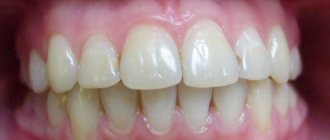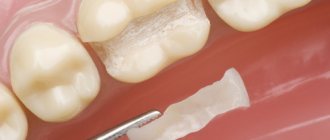Tanga Moreau
Calvin Klein Jeans advertising campaign Sandro SS 2011 advertising campaign Kenzo advertising campaign Ralph Lauren Polo Sport FW 1997 advertising campaign Missoni FW 1997 advertising campaign Maison Michel SS 2011 lookbook Shooting from the spring iD 2010 Shooting from the second issue of The Gentlewoman Shooting from the Italian Marie Claire for August 2011 Shooting from Harper's Baza ar
Blonde Belgian with green-blue eyes, Tanga Moreau, entered the modeling business in the mid-1990s. The girl achieved success quite quickly: her first shoot was an advertising campaign for Moschino, then she starred for Alberta Ferretti, Kenzo and Miu Miu, and later signed the most expensive exclusive contract in history - for five years in a row Tanga was the face of several lines and the fragrance of Ralph Lauren. At the age of 23, the girl, who was born with cysts in the spinal cord, due to which she could be paralyzed at any moment, quit her modeling job for marriage and the birth of a child. But in 2010, agents invited Moreau to return to the industry. Perhaps this happened thanks to the gap: it was then that the fashion for fashion models with such a flaw reached its peak. Also at this time, models from previous decades like Kristen McMenamy and Stella Tennant were returning to the modeling business. Over the past year, the thirty-three-year-old Belgian, who has two children, has walked in shows for Chanel, Calvin Klein and Maison Martin Margiela, posed for Italian, Russian and French Vogue, iD and The Gentlewoman, and also appeared in campaigns for Akris, Sandro and in the Maison Michel lookbook along with another model with a gap, Ashley Smith.
Ways and methods of dental care
Let's talk about how gaps between teeth are removed in dentistry. Which method or combination of technologies is right for you depends on the initial clinical situation, which is identified through a comprehensive diagnosis: radiography, medical history, visual examination, complaints.
Therapeutic approach
A small gap can be closed with a composite material, and minor defects in the form of bends, spots, or irregular shapes can be corrected using artistic extensions. At the appointment, the dentist-therapist will apply composites layer by layer to the problem area, model them into the desired shape, and give the restoration a shade as close as possible to natural enamel. Next, it remains to grind and polish the material.
The method is fast, but not the most durable. Plus, the patient does not always get the result he wanted. After all, handling composites in the area of central incisors is a filigree job that requires a high level of skill, and not every specialist can do this. The biggest challenge here is to ensure that the restoration matches the color and shine of the patient's teeth.
On a note! Composite restorations require careful and careful care without the use of abrasives. The material quickly accumulates plaque and loses its shine and needs polishing.
Orthopedic approach
An orthopedic dentist will tell you how to remove a gap between the front teeth if, for example, it is caused by microdentia, that is, a violation of the shape and size of the crown. If the incisor crowns are too small, the doctor may suggest the following treatment options:
- prosthetics with veneers, lumineers and other types of aesthetic thin overlays: these are installed in the frontal area and visually mask the defect,
- installation of crowns: this invasive procedure makes sense if the front incisors have already undergone significant destructive processes as a result of injuries and caries.
An orthopedist will also provide assistance if the defect is caused by the loss of some teeth. The doctor may suggest the installation of various prostheses: bridges, removable devices, crowns (on implants). However, in this case, the specialist often has to work in tandem with other doctors: an orthodontist, an implantologist. And treatment takes a lot of time, since the neighboring teeth have managed to shift to the place of the lost one, which means they need to be returned to their original position so that there is enough space for installing dentures and implants.
Important! The orthopedic approach allows you to get rid of the diastema by increasing the width of the crown of the tooth, which is not the right solution for all patients. Sometimes this can lead to an unsatisfactory aesthetic result, for example, the front teeth will look too large after restoration. Therefore, when choosing a method, it is imperative to take into account all the patient’s parameters, conduct thorough diagnostics and 3D modeling of the treatment process.
Orthodontic approach
This is perhaps the longest treatment method, but sometimes it is the most effective. For example, in case of malocclusion pathologies that impair not only the beauty of the smile, but also the functionality of the maxillofacial apparatus. And also, if you want to get rid of gaps caused by the fact that neighboring teeth have managed to move to the place of a long-removed element.
Correcting gaps between teeth with braces
“If a gap is critical for you, and you don’t mind the money and time to fix it, then definitely treat it. In addition to the diastema, I had another not very pleasant problem associated with it - I was literally spitting saliva through the gap during a conversation. It’s not very pleasant, so I took care of correcting it. Somehow it turned out that naturally after 13 years it didn’t go away for me. I wore braces for almost 2 years.”
Anna K, fragment of a review from the lady.mail.ru forum
Here, doctors can offer adult patients wearing permanent braces or removable aligners. If it is necessary to straighten only individual teeth, different plates may be prescribed. If harmful functional habits occur, wearing trainers may be required. On average, treatment takes 1-2 years. Then you need to wear retainers, which prevent the teeth from moving back.
The orthodontic approach often involves surgery or orthopedics before or after it. For example, individual “supernumerary” teeth may need to be removed before braces can be applied. And after correcting the bite, the patient can complete the look by installing veneers or lumineers.
Georgina Cooper
Cover of The Face, 1997 Mango catalog Shooting for British Marie Claire Shooting for French Vogue Shooting by Terry Richardson for Harper's Bazaar, 1997
In 1991, Briton Georgina Cooper starred in a video for the American group Bon Jovi. Four years later, a teenage girl with an angular figure and a gap, atypical for models of the nineties, was photographed for one of her books by photographer Corinne Day, the same one who loved models with imperfections and who discovered Kate Moss to the world. Georgina began working full-time in the fashion industry only in 1997. Over ten years, she did more than a hundred shows, including Jil Sander, Max Mara, Nina Ricci, was the face of Burberry, H&M and Emanuel Ungaro, and starred for the covers of Marie Claire, Vogue and The Face. At the end of 2005, Cooper left the fashion industry and has no plans to return.
Anna Paquin
A happy accident allowed Anna to become famous in the world of cinema. Almost 5,000 girls applied for the role of Flora in the film with a dramatic plot “The Piano”. However, the choice fell on Anna. The girl really appreciates and is proud of her appearance. When she is asked why she does not want to remove the space between her teeth, she is offended. He thinks it's rude on their part. The actress does not plan to remove the diastema and considers it the highlight of her image.
Alek Wek
Cover of iD, April 1998 Shoot for iD, summer 2011 Shoot from French Vogue, December 1998 Shoot by David LaChapelle Shoot for The Face, 2000
Alek Wek was born in Sudan, but due to the civil war her family moved to Britain. In 1995, the girl joined the Model 1 agency, starred in the videos for Tina Turner's Golden Eye and Janet Jackson's Got 'Til It's Gone, and in 1997 was named Model of the Year, according to MTV. At the same time, iD magazine, which puts Alec on the covers with enviable consistency, awarded her the title of the main model of the decade. It is interesting that the girl made her debut on the catwalks only in the winter of 1997: she walked for Alexander McQueen, Chanel and Jean Paul Gaultier. Then she starred in dozens of advertising campaigns, including Chanel and Victoria's Secret, opened and closed a hundred shows, appeared in the Pirelli calendar, wrote an autobiography, played a princess in the film “The Four Feathers” and launched her own line of bags, wek1993. Vek works in the fashion industry to this day.
Lara Stone
The stunning beauty was born in 1983 on December 20, and was raised in a small Dutch town called Mirlo. She has since become the seventh richest model in the world, according to Forbes magazine in 2012. Lara discovered her talent while on holiday with her family at the age of 12. She took part in a modeling competition and did not win, but this meeting ensured that she signed a contract with Elite Modeling Agency at the age of 15. At 23, she left Elite and began working with IMG Models around the world.
How did Lara manage to become the seventh model on the Forbes list? She earned millions by filming for famous brands:
- Givenchy,
- Calvin Klein
- Fendi
- Max Mara,
- Chanel,
- Diesel,
- MarkJacobs,
- Just Cavalli
. And almost every magazine flaunted her “shortcomings.” Not bad for someone who was once considered ugly on the internet. In 2001, Lara gave an interview to GQ: “It’s unpleasant when you’re having a hard day and then someone else says: “She’s so ugly that I wouldn’t even let my dog stand next to her.” And then 500 people like it.”
Abbey Lee Kershaw
Abbey Lee Kershaw at Look At Me Encyclopedia
Australian Abbey Lee Kershaw is known for her unusual facial features, numerous tattoos and a gap in her face. She is the face of Tom Ford, Gucci and Versace, and is often photographed for Vogue and less commercial publications like Russh and The Journal. Kershaw currently plays in the band Our Mountain. Due to her music career, she missed last New York Fashion Week.
Folk signs in Eastern countries
Residents of the East recognize a gap between teeth as a bad sign; for a long time, gap-toothed people have been treated here with caution and caution. According to Eastern superstition, sparse teeth are considered a sign of dishonesty.
According to some teachings, the entire human jaw was divided into areas, each of which was responsible for certain qualities, abilities and personality traits of a person. Thus, the 8 anterior teeth of the upper jaw are responsible for the ability to analyze. And the bottom eight is responsible for spiritual qualities, with each tooth representing one specific one. Accordingly, if a tooth is missing or affected by disease, the corresponding quality of soul is considered underdeveloped or does not exist at all.
Ashley Smith
Sisley advertising campaign Louvre cover, autumn/winter 2010 Shoot for Numero Shoot for Russh, November 2009 Shoot for Italian Vogue, May 2011
Ashley Smith, one of the main new models of last year, invites comparison with Lara Stone: she is blonde, has large breasts and has a gap. . A young American woman says she wanted to fix her teeth: “I was thinking about getting rid of a gap, but I couldn’t raise the money. In the end, everything worked out just fine. Now my flaw brings me income because it distinguishes me from other models.” Perhaps, if the girl had not had a gap, she would not have become the face of Topshop, Sisley and Levi's and would not have appeared in iD, Vogue and Numero.
Madonna
Among world celebrities with diastema, perhaps Madonna can be considered the most outstanding. Despite the fact that the star’s teeth were repeatedly corrected by dentists, the singer never expressed a desire to get rid of the not too conspicuous, but still noticeable gap between them.
And when the employees of one fashion magazine, for the cover of which Madonna was filming, decided to “cover up” the gap in Photoshop, the artist completely threw a scandal.
View this post on Instagram
A post shared by Victor Ray (@v1cr4v) on Aug 2, 2022 at 6:00am PDT
Ikeline Stange
Dutchwoman Ikeline Stange could have become a multimedia designer, but in 2004 she was noticed by scouts from a modeling agency and began working as a model. The model with delicate features, expressive cheekbones and a gap in the face has been the face of Burberry, D&G, Sonia Rykiel, opened and closed dozens of shows, and also organized an exhibition of her own photographs called I Like Ponies.
Lena Temnikova
Elena Temnikova is a famous singer, a former member of the group “Serebro” and the famous show “Star Factory 2”. The singer is not shy about her gap and always takes great pleasure in showing off her smile to photographers. As a child, parents tried to force the girl to wear records to correct the defect. But Lena made a different decision. The record was rejected, and the gap became the singer’s “trick”.
Modern interpretation
The presence of a gap between the teeth is a striking sign that makes a person as noticeable as possible. The girl looks sexy and defenseless, and the guy’s flaw adds charm and mystery. It is believed that such people have the ability to enjoy life and enjoy every moment.
Among famous people, Vanessa Paradis, Madonna, Brigitte Bardot, Alla Pugacheva can boast of a gap between their teeth.
A similar twist is common among creative individuals. Creativity and the ability to take a non-standard approach allow a person to easily achieve noticeable success. It is important that the flaw does not disfigure the appearance.
Modern interpretation also pays attention to the size of the gap between the teeth. It is believed that the neater and more natural the defect, the happier the object. It is important that the defect does not appear due to poor oral care. Caries eats away the enamel, which can result in a “fashionable” flaw.
In China, they still believe that large gaps between teeth promise financial problems and intemperance. Often such people are attributed to idle talk and the inability to keep other people's secrets. In Europe they believe that zigzag sparse incisors are a sign of a vengeful person.
Orthodontic correction of a gap
In childhood, a variety of removable plates and artificial crowns are used, which are not highly aesthetic, but solve the problem quickly and effectively.
For adults, the anomaly is corrected with fixed metal or invisible ceramic braces, as well as lingual systems attached to the inside of the teeth. According to indications and if the patient wishes, an individual mouth guard can be made - a removable plate made of an elastic transparent composite.











